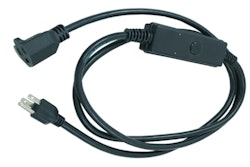
It’s easy to see how transformative Industry 4.0 has been for forward-thinking manufacturers. The assembly line has been made smarter with leading edge technologies such as artificial intelligence, cloud computing, advanced robotics and sophisticated sensors. While you may see innovation on the assembly line, you don’t always see it in the processes that take place before and after an item is manufactured.
Even in a modern factory or warehouse, you’ll see workers carrying out tasks such as sorting, order picking and inventory management with pen and paper, but they’re also still using computers and devices that look like they were released in the 80s. For Industry 4.0 to really make a difference, it has to bring advanced intelligence to every step of the manufacturing process.
Mobile devices such as smartphones, tablets and wearables are ideally suited to help Industry 4.0 optimize critical manufacturing processes. Mobile technology has transformed business and the lives of consumers, and that same technology can be used by manufacturers today. Instead of using obsolete, dedicated devices or manual means for data capture and related tasks, manufacturers and other supporting organizations throughout the entire supply chain can use smart devices that connect to the smart manufacturing and IoT systems that are powering the industry.
These connectivity benefits, combined with vastly improved data capture software solutions, have made mobile devices an indispensable part of the critical supporting operations that happen off of the assembly line.
Using Smart Devices for Mobile Data Capture
Mobile technology can extend smart manufacturing all the way to the customer. Now any customer with a mobile device can be a part of the supply chain and make custom orders, see live inventory numbers, and track deliveries on a map, bridging the physical and virtual worlds to make processes more efficient.
Here are just some of the ways that mobile data capture technology can benefit the supply chain:
Order entry—Customers and employees can quickly place orders through an app or mobile website by scanning barcodes on products or shelf labels in their own warehouses and storage rooms, which is more efficient than using pen and paper to record items to be re-ordered.
Inventory management—Managing inventory with pen and paper is a time-consuming process that is prone to errors. Mobile inventory management makes it fast and easy to get accurate counts through barcode scanning.
Thanks to augmented reality (AR), your employees can even point their mobile camera at a warehouse shelf and see current inventory numbers displayed on the items through the screen. AR overlays on the screen can show items that have satisfactory inventory numbers highlighted in green while items that are running low are highlighted in red—including information about whether the item has already been re-ordered and when the delivery is expected.
Drone-based data capture can further automate inventory management where a drone flies past the shelves to scan the barcodes on the stored items to get an accurate inventory count. This eliminates the need for a human to complete this time-consuming task with the help of a colleague in a forklift.
Search and find—Another use case for AR comes into play when you’re trying to find something specific in a sea of items. By pointing your mobile camera at a shelf, all of the barcodes will be scanned and processed at once, and the correct item may be highlighted in green on the screen.
Track and trace—Serialized 1D or 2D barcodes printed or engraved on items that are being manufactured and that are tracked through the supply chain help facilitate recalls and can also help to detect counterfeit goods.
Shipping and receiving—Mobile scanning will reduce labor costs and streamline warehouse processes because entire shipments can be scanned and processed with a single scan. The barcode scan can also be combined with image capture and document capture so that the state of a damaged shipment can be documented and delivery documents are digitized right when shipments are received.
Field service—Field service technicians can use their mobile device to identify the device or machinery they are maintaining. This eliminates errors typing long serial numbers and makes the data capture process more efficient. With the machinery uniquely identified, maintenance records can be inspected and updated, and the relevant repair manuals are easily accessible. Digital eyewear can even make hands-free operation possible for a technician, with the built-in camera identifying the machinery and the built-in display showing maintenance records and repair instructions.
Benefits of Mobile Data Capture Technology
Building on the previous examples, there are three overall benefits that come from using mobile data capture technology in your smart manufacturing processes: reduced costs, increased productivity and minimal training.
One of the main concerns for many enterprises about using new technology is the price tag. Some executives are still stuck in the mindset that new technology has to be exceedingly expensive, even though that’s not always true. Others only think about the initial purchase price without thinking about the total cost of ownership, which can be a real eye-opener.
Mobile devices equipped with mobile data capture software offer the same barcode scanning performance as traditional scanners, and factors such as much lower upfront cost help reduce the total cost of ownership up to 5x over the lifetime of the device. This makes using mobile devices a no-brainer. You can save even more money by implementing a bring-your-own-device (BYOD) program, as almost every employee already owns a mobile device.
Dedicated scanners can only perform one job, but a single mobile device can handle countless tasks in a handheld, ergonomic way through apps, websites and peripherals. Using mobile technology will also make your IT department happy because the number of devices that they’ll have to manage will decrease, and mobile device management solutions make it easy to manage them effectively.
In addition, your employees have smartphones that they use every day, so using mobile technology as a part of their job will feel natural to them and eliminate extensive training time.
Not Just Smartphones and Tablets
Most of us immediately think of a smartphone or tablet as being a mobile device, but our imagination may dry up beyond those two examples. The truth is that devices such as wearables, drones and digital eyewear are quickly becoming important parts of the mobile landscape as well.
One of the main reasons why smartphones and tablets are so useful for smart manufacturing is that each has a built-in camera, which can capture information and allow intelligence to be added to the information that is captured. Drones, digital eyewear and other wearables such as smartwatches can also be equipped with cameras, which make them ideal devices for mobile data captur
Most of the mobile data capture activity today focuses on hands-on scenarios where smartphones and tablets are directly manipulated in the hands of the user. In the future, a larger percentage of this activity will be hands-off or even hands-free.
Think about how a camera in a pair of smart glasses could enable someone to visually scan a shelf and find the right item in a hands-off way, or even how a drone could use its camera to take inventory on its own in a hands-free way. This isn’t science fiction—these things are happening today because of advancements in mobile technology and data capture.
It’s Time to Adopt
When you consider where mobile technology has been and where it’s going, it only makes sense that an effective Industry 4.0 strategy would include mobile data capture as a critical part of the equation. It’s important that the assembly line is intelligent, but the assembly line is only one part of a much larger manufacturing process and supply chain. For manufacturing to be smart, it has to be smart throughout the entire process—from before items are being manufactured all the way to when they’re delivered to their final destinations. Mobile data capture technology makes this concept possible.

















![Pros To Know 2026 [color]](https://img.sdcexec.com/mindful/acbm/workspaces/default/uploads/2025/08/prostoknow-2026-color.mduFvhpgMk.png?ar=16%3A9&auto=format%2Ccompress&bg=fff&fill-color=fff&fit=fill&h=135&q=70&w=240)

